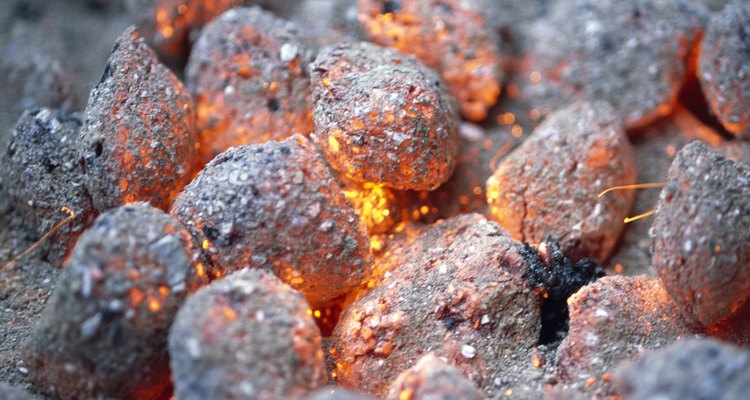
Goodshoot/Goodshoot/Getty Images
A whole hog roast is suitable for a very large gathering, but you can always barbecue a half pig if you don't have as many mouths to feed. While whole hogs are commonly cooked on a rotisserie spit, a half pig must be cooked on a large grill grate. Many party supply companies rent large barbecue grills if you don't own one, or you can build a cinder block wall around a fire pit and cover it with large barbecue grates.
Fill the bottom of the roaster with charcoal, using about 60 pounds of charcoal for a 70-pound half pig, or 70 pounds of charcoal for a 100-pound half pig. Light the charcoal and allow the flames to die down until the coals turn ash gray. Use seasoned wood coals instead of charcoal, if desired.
Place the grate over the hot charcoal. Add a thermometer to the roaster to help maintain a cooking temperature inside the roaster of about 200 degrees Fahrenheit.
Rub your choice of a dry seasoning and spice blend over all sides of the hog. You can purchase dry rub blends or make your own with spices such as salt, black pepper, white pepper, garlic powder, onion powder, cumin, brown sugar, paprika and chili powder.
Lay the hog on the roasting grate, starting with the exposed meat side facing down. While not required, you might desire to first wrap the pig half in chicken wire to make it easier to flip the hog and remove it from the grill. Wrap it tightly and secure it with 16-gauge wire. Thread long pieces of steel rebar through the wire to provide handles for lifting the hog.
Close the lid on the roaster, if applicable. An open pit won't have a lid to close, but you can cover the hog with aluminum foil to help trap in heat.
Roast the half pig for about 1 hour, maintaining a constant temperature of about 200 F. Add more charcoal or wood coals as needed to maintain the temperature.
Coat the half pig generously with your choice of thin barbecue mop sauce, applied with a barbecue brush mop. A basic recipe might include equal portions of apple cider vinegar, broth, olive oil and ketchup, with other spices blended in to suit your taste. If you prefer citrus flavor, try a mojo marinade made with juice from lemons, limes, grapefruits or a combination of juices. Mix in spices such as garlic, onion powder, cumin and cilantro.
Turn the hog after 1 hour of roasting. Season the other side with the homemade barbecue sauce. Replace the lid and cook for another 1 hour. If you added chicken wire and rebar, wear heavy gloves while grasping the rebar and flipping the hog. Without these rebar handles, turn the hog carefully with large barbecue forks.
Continue roasting the hog, flipping it over and applying the mop sauce once every hour. Leave the lid open to reduce the inside temperature of the roaster if the outside cooks much faster than the meat at the center of the hog.
Insert a meat thermometer in several places throughout the hog to check for doneness, beginning about 4 to 5 hours into the cooking process. Pork is safe to eat when the meat reaches an internal temperature of 145 F. A 75- to 100-pound pig takes 6 to 8 hours to cook fully, but some cuts of meat such as ribs will cook faster than the thick ham. You might prefer to carve these cuts of meat as they reach 145 F to avoid over-cooking and drying out the meat.
Remove the hog from the roaster and set it on a table lined with newspaper. Cut the wire away from the hog with wire cutters. If you chose not to wrap the hog with wire, it might be easier to carve the hog on the grate and remove it in smaller sections.
Carve the meat into smaller pieces for serving. If desired, you can separate parts such as the ham, shoulders and tenderloin so guests can pick their preferred meat cuts.
Related Articles
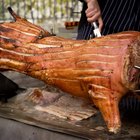
How to Cook a Half Hog

How to Cook Turkey Legs on the Grill
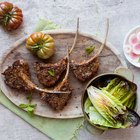
How to Grill Rack of Lamb
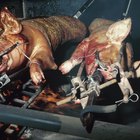
How to Cook Lechon

How to Roast a Split Turkey
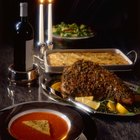
How to Smoke a Leg of Lamb Using an ...

How to Barbecue Bologna on a Charcoal ...

How to Do a Filipino Pig Roast
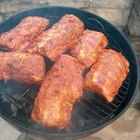
How to Smoke Ribs With a Gas Smoker

Roasting a Pig on a Gas Barbecue

How to Smoke a Brisket With an Offset ...
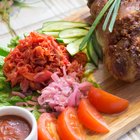
How to Smoke a Ham Shank on a Charcoal ...

How to Cook a Half Hog
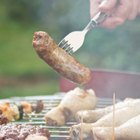
How to Soak Brats in Beer
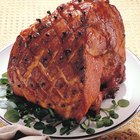
How to Bake Two Smoked Ham Halves

How to Make a Blackbuck Antelope Roast

How to Trim and Tie a Beef Tenderloin
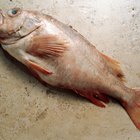
How to Cook Redfish on a Grill

Shank Ham Cooking Directions

The Best Ways to Inject Turkey to Make ...
References
Writer Bio
A former cake decorator and competitive horticulturist, Amelia Allonsy is most at home in the kitchen or with her hands in the dirt. She received her Bachelor's degree from West Virginia University. Her work has been published in the San Francisco Chronicle and on other websites.
Photo Credits
Goodshoot/Goodshoot/Getty Images